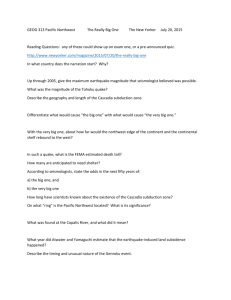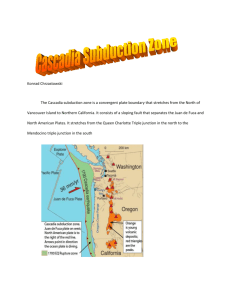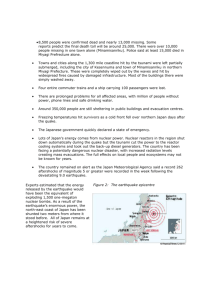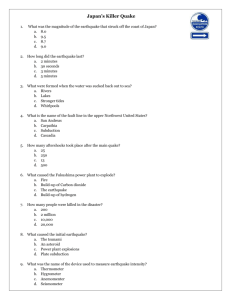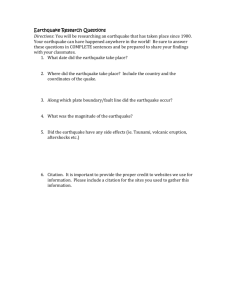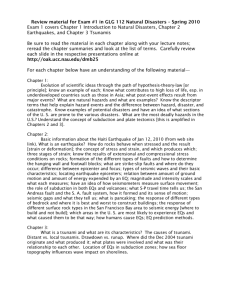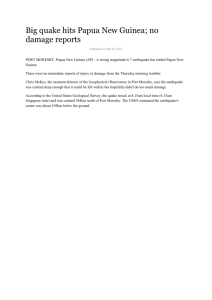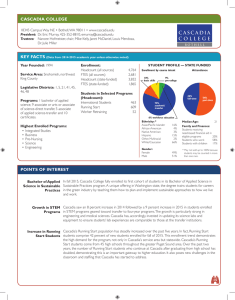text
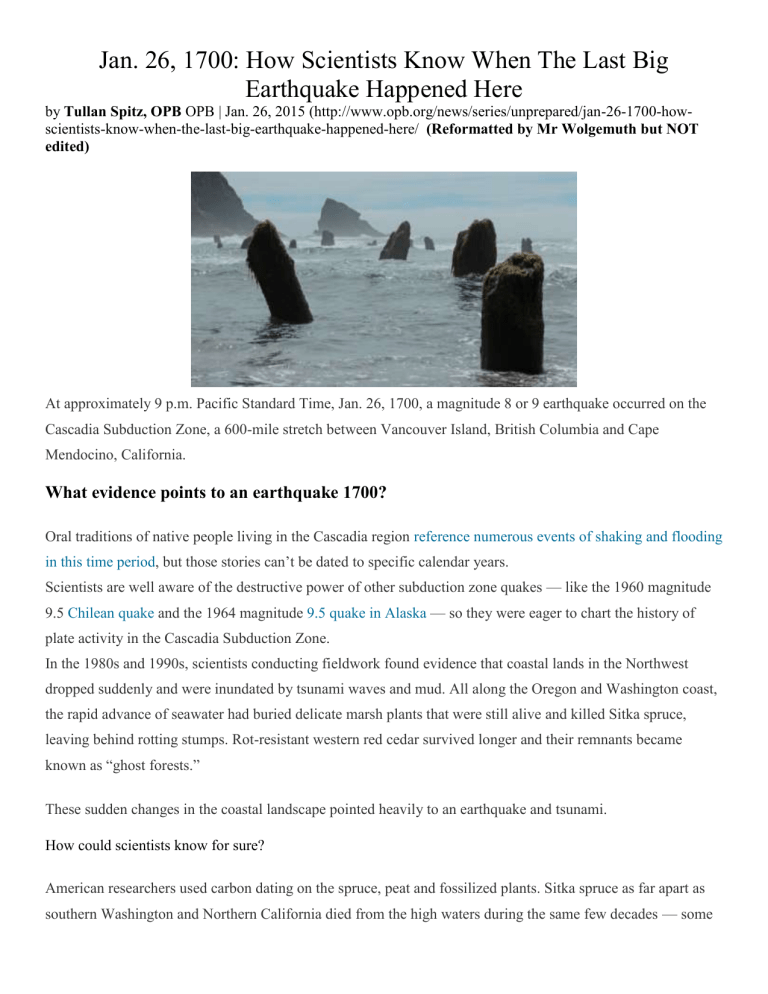
Jan. 26, 1700: How Scientists Know When The Last Big
Earthquake Happened Here
by Tullan Spitz, OPB OPB | Jan. 26, 2015 (http://www.opb.org/news/series/unprepared/jan-26-1700-howscientists-know-when-the-last-big-earthquake-happened-here/ (Reformatted by Mr Wolgemuth but NOT edited)
At approximately 9 p.m. Pacific Standard Time, Jan. 26, 1700, a magnitude 8 or 9 earthquake occurred on the
Cascadia Subduction Zone, a 600-mile stretch between Vancouver Island, British Columbia and Cape
Mendocino, California.
What evidence points to an earthquake 1700?
Oral traditions of native people living in the Cascadia region reference numerous events of shaking and flooding in this time period
, but those stories can’t be dated to specific calendar years.
Scientists are well aware of the destructive power of other subduction zone quakes — like the 1960 magnitude
9.5 Chilean quake and the 1964 magnitude 9.5 quake in Alaska — so they were eager to chart the history of plate activity in the Cascadia Subduction Zone.
In the 1980s and 1990s, scientists conducting fieldwork found evidence that coastal lands in the Northwest dropped suddenly and were inundated by tsunami waves and mud. All along the Oregon and Washington coast, the rapid advance of seawater had buried delicate marsh plants that were still alive and killed Sitka spruce, leaving behind rotting stumps. Rot-resistant western red cedar survived longer and their remnants became known as “ghost forests.”
These sudden changes in the coastal landscape pointed heavily to an earthquake and tsunami.
How could scientists know for sure?
American researchers used carbon dating on the spruce, peat and fossilized plants. Sitka spruce as far apart as southern Washington and Northern California died from the high waters during the same few decades — some
time between 1695 and 1720. Their rings were wide right up through the last ring, proving that a sudden event rather than slow sea level rise was the culprit.
How do they know the exact hour of the quake?
After the American scientists published their work, Japan’s Kenji Satake published a letter in the journal
“Nature” that summarized meticulous records from multiple locations in Japan describing high waves on Jan.
27 and 28.
It was called Japan’s “orphan” tsunami because there was no earthquake locally that could have triggered it.
There is also no evidence of a large earthquake in South America or Alaska at that time. The signs pointed to a quake from the Cascadia Subduction Zone.
Satake explained that it would have taken a tsunami about 10 hours to travel from Cascadia to Japan, thus pinpointing the earthquake to about 9 p.m., Jan. 26. Because of the extent of the damage recorded in Japan,
Satake estimated that it was approximately a magnitude 9 quake.
Is there any other evidence?
In 1997, scientists used dendrochronology — a method of dating trees by comparing ring patterns to samples of known age — on the ghost forest trees. They were able to determine the trees had stopped growing after completing the 1699 growing season, dating their death to somewhere between September 1699 and May 1700, further confirming the date independently of Japanese records.
More evidence is on the ocean floor. Paleoseismologists have dated core samples of debris from earthquakeinduced landslides . This data indicate a large earthquake with a lot of shaking was going on during this period
— and that it was happening off the Oregon coast.
And remember the native stories? Scholarly analysis of nine stories with sufficient details to assign date ranges narrowed the timeline to approximately 1701, remarkably close to the accepted date for the event.
When is the CSZ likely to act up again?
Over its 10,000-year rupture history, earthquakes around magnitude 9 have occurred along the length of the
Cascadia Subduction Zone 19 times — about every 526 years. The southern section of the CSZ has seen 19 additional quakes of 8 or higher. Here, very close to home, the average recurrence is every 234 years. With the last major event placed at 315 years ago, we’re due.


